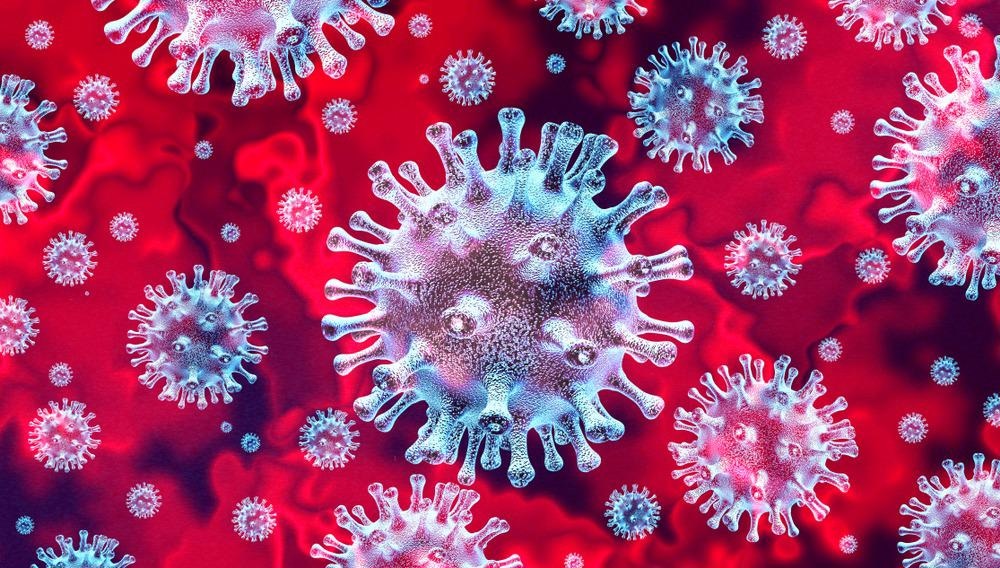
Image Credit: Lightspring/Shutterstock.com
Researchers at the University of Illinois Urbana-Champaign have developed a new test that can detect the presence of coronavirus RNA in under five minutes. The test – based on thin-film graphene and filter paper sensor – is cheap to produce, portable, and can be adapted for sensing other diseases.
The COVID-19 virus spread through the planet with devastating consequences from early 2020. The world is still in the grip of this global pandemic – which public health professionals have been predicting for decades – and it is likely that there will be more pandemics in coming decades.
As many victims and carriers of the virus can be asymptomatic while still being infectious, the World Health Organization advised governments early into the pandemic to pursue wide-ranging testing programs as key parts of their pandemic response.
Although the COVID-19 pandemic is loosening its grip in some parts of the world – although not all – due to vaccinations, testing remains vitally important. To open up society and economies safely, quick, cheap and readily available tests must become a part of the so-called “new normal” in society.
Unfortunately, COVID-19 tests can be slow to produce results and are not always readily available. Tests that identify viral RNA must be performed in laboratories with often expensive equipment – so wait times can cause delays. Tests that detect the presence of viral antibodies in the patient’s body may not show a positive result despite exposure to the virus. This is because antibodies may not be naturally produced in the body until two or even fourteen days after exposure to the virus.
There has been some experimentation with point-of-care tests so far in efforts to combat this delay and inaccessibility. Finding an accurate test, which can be applied in a doctor’s office and give results to the patient quickly and at the point of care, has been a key research focus for many working on solutions to combat the spread of COVID-19.
The University of Illinois Urbana-Champaign researchers working on this problem have now produced a COVID-19 test using graphene and filter paper-based sensors which can detect the presence of the virus in as little as five minutes.
The sensor is relatively cheap to produce and can be transported easily. This means that COVID-19 testing can be performed quickly and at the point-of-care – which in turn can lead to many more accurate tests being delivered for the population.
How Does the University of Illinois Urbana-Champaign Test Work?
The test works with samples taken through a nasal swab and saliva from the patient or test subject. These samples are then placed on a graphene and filter paper-based electrochemical biosensor. The biosensor is combined with an electrical readout, which can provide test results in under five minutes at the point of care.
The sensor detects any SARS-CoV-2 genetic material in the sample, and can also differentiate between viral RNA loads in subject samples. This differentiation is important, as it can provide a quantitative indication of the infection’s progress in the subject or patient.
The sensor has two components: probes that detect the presence of viral RNA and a platform to measure electrical readout.
The antisense oligonucleotide (ASOs) probes target two regions of the virus’s N-gene (nucleocapsid phosphoprotein). By targeting two regions, the probes ensure sensor reliability. If gene mutation has taken place in one region, then viral RNA can still be detected in the other region.
Each probe is ultrasensitive to sensing SARS-CoV-2 RNA due to its components and composition. Gold nanoparticles (AuNP) are capped with single-stranded nucleic acids (ssDNA). This accelerates electron transfer in the hybridization process and these electrons are then broadcast over the sensing platform.
The sensing platform is made from filter paper coated with graphene nanoplatelets. The graphene coating ensures the thin film has high electrical conductivity. On top of this filter paper and graphene-based thin film, a specially designed gold electrode is placed to act as a contact for the electrical readout.
Viral presence is detected when electrons (accelerated by gold nanoparticles in the probes) are broadcast over the thin-film sensing platform, causing an increased output signal from the platform. This signal is the result of the hybridization of probes and viral RNA, causing a change in the sensor’s electrical response.
This test – which itself was developed from a previous filter paper and graphene-based test for the presence of cancer – can be modified to detect future diseases as well. As COVID-19 loosens its grip on the world, testing remains a vital part of public health efforts to return to normal economic and social activity as safely as possible.
If more pandemics occur as can be expected – which most public health professionals have warned about – then adapting this test for other diseases will be a crucial part of our collective response.
References and Further Reading
Alafeef, Maha, Ketan Dighe, Parikshit Moitra and Dipanjan Pan (2020). “Rapid, Ultrasensitive, and Quantitative Detection of SARS-CoV-2 Using Antisense Oligonucleotides Directed Electrochemical Biosensor Chip.” ACS Nano. [Online] https://doi.org/10.1021/acsnano.0c06392.
Song, Huan (2020). “Paper-based Electrochemical Sensor Can Detect COVID-19 in Less Than Five Minutes.” University of Illinois Urbana-Champaign. [Online] https://bioengineering.illinois.edu/news/paper-based-electrochemical-sensor-covid-19.
Touchstone, Liz Ahlberg (2020). “Crumpled Graphene Makes Ultra-Sensitive Cancer DNA Detector.” University of Illinois Urbana-Champaign. [Online] https://bioengineering.illinois.edu/news/crumpled-graphene-cancer-dna-detector.
Disclaimer: The views expressed here are those of the author expressed in their private capacity and do not necessarily represent the views of AZoM.com Limited T/A AZoNetwork the owner and operator of this website. This disclaimer forms part of the Terms and conditions of use of this website.